Case study #1: The GreenStar Network project (www.greenstarnetwork.com)
Author: Professor Mohamed Chériet (Green ICT initiative steering committee) University of Quebec’s École de technologie supérieure, Canada.
The GreenStar Network (GSN) project was, to the best of our knowledge, the first worldwide initiative started in 2010 aimed at providing cloud-based ICT services based entirely on renewable energy sources such as solar, wind and hydroelectricity. The main objective of the project is to create a pilot study and a testbed environment from which to derive best practices and guidelines to follow when building low carbon networks, in particular to demonstrate that it is possible without decreasing performance of ICT services. The network is designed to transport user service applications, under the form of virtual machines, to be processed in data centers built in proximity to green energy sources, thus GHG emissions of ICT services are reduced to a minimum. Whilst energy efficiency techniques are still encouraged at low-end client equipment (e.g., such as hand-held devices, home PCs), the heaviest computing services should be dedicated to data centers powered completely by natural green energy with a large abundant reserve in Canada, Europe and the USA. Core nodes are linked by an underlying high-speed optical network having up to 100 Gbit/s bandwidth capacity provided by Canarie (www.canarie.ca), Canada’s research and reducation network. Virtualized management has been implemented for service delivery regardless of the physical location of the infrastructure, allowing complex underlying services to remain hidden inside the infrastructure provider. Resources are allocated according to user requirements; hence high utilization and optimization levels can be achieved.
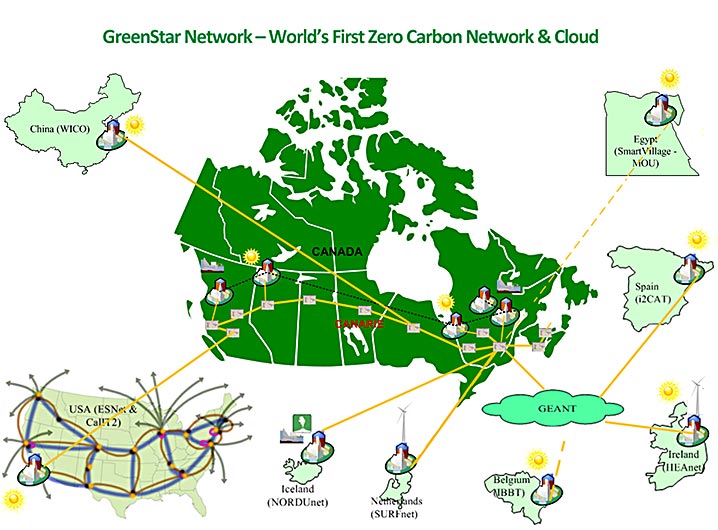
The GreenStar Nework map
In 2012, the Canadian section of the GSN reached the largest deployment of six GSN nodes powered by sun, wind and hydroelectricity. It is connected to the European green nodes in Ireland (HEAnet), Iceland (NORDUnet), Spain (i2CAT), the Netherlands (SURFnet), and some other nodes in other parts of the world such as in China (WiCo), Egypt (Smart Village) and the USA (CalIT2, UCSD).
GreenStar Network nodes in Canada and the USA are linked by six lightpaths over Canarie and ESNet networks, and connection to Europeans nodes is done via Geant Network.
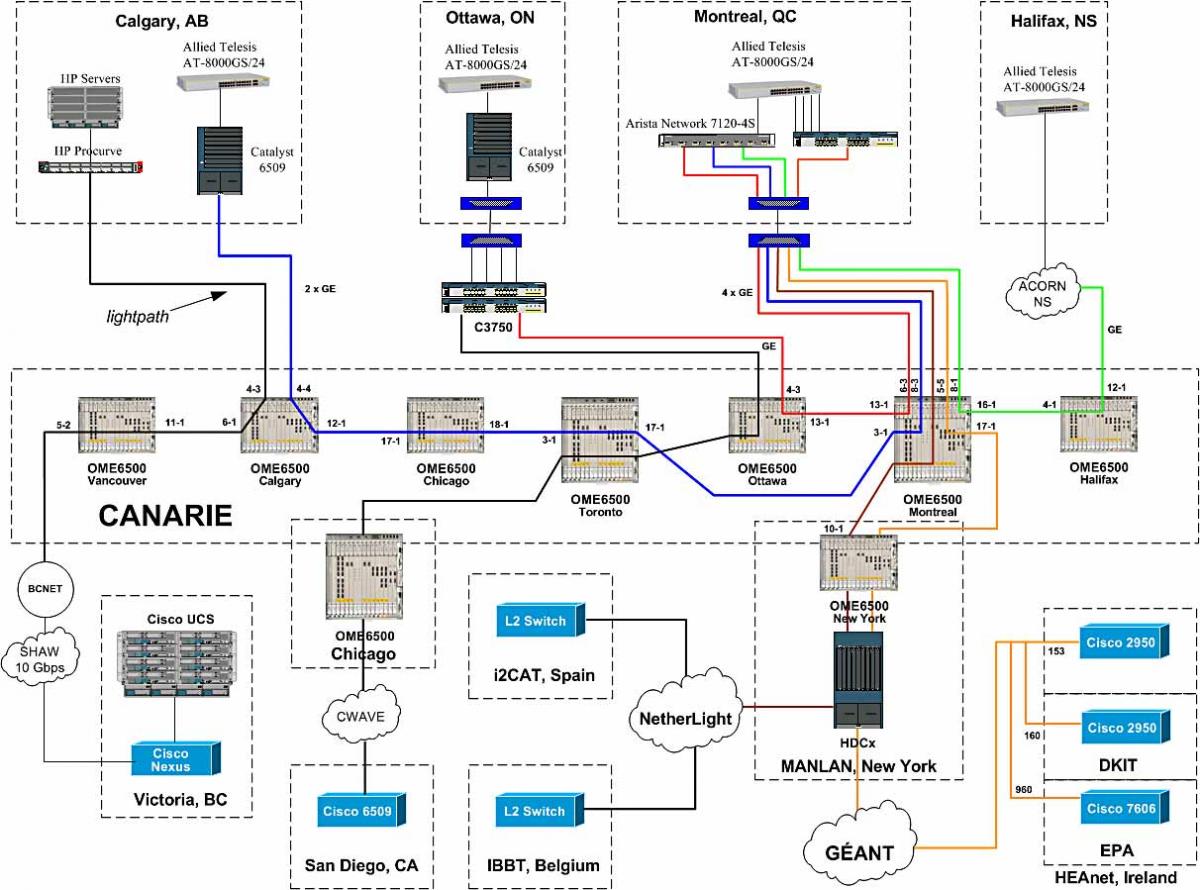
Physical connection of GreenStar Network nodes
In 2012, a GSN-like model had been built by HEAnet and NORDUnet in Ireland and Denmark within the EU FP7 Mantychore project. The successful deployment of a GSN hub in Europe shows how international research collaboration can reduce ICT greenhouse gas emissions by using renewable energy sources. None of this would be possible without flexible, high performance international research networks such as GÉANT (www.geant.net) that provides the real time monitoring and control to deliver a virtualized green architecture. The techniques and technology within the GSN project have far-reaching potential to reduce emissions, and GÉANT’s guaranteed performance is central to project success.
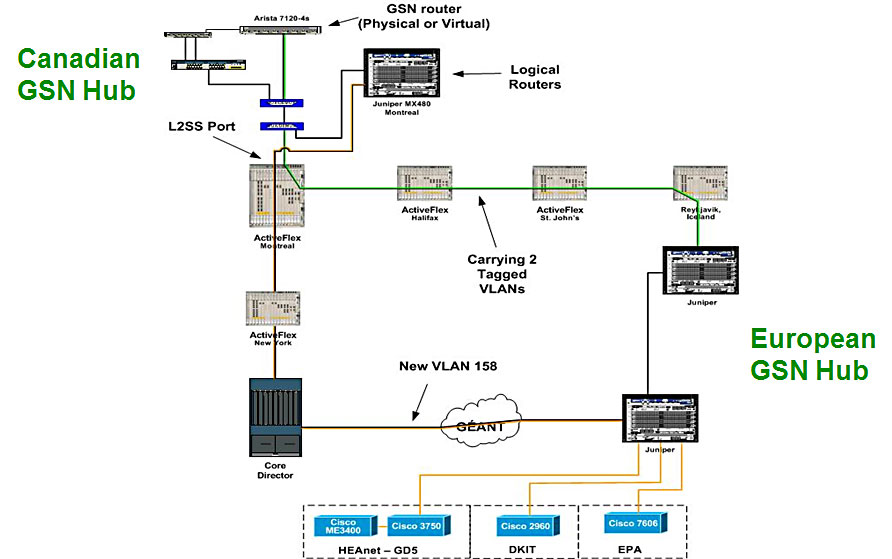
Layer-3 connection between Canadian and European hubs in the GSN
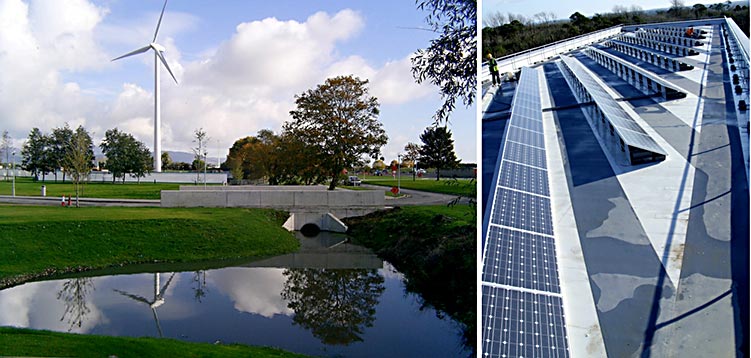
GreenStar Network nodes powered by wind and solar energy at HEAnet (Dublin, Ireland)
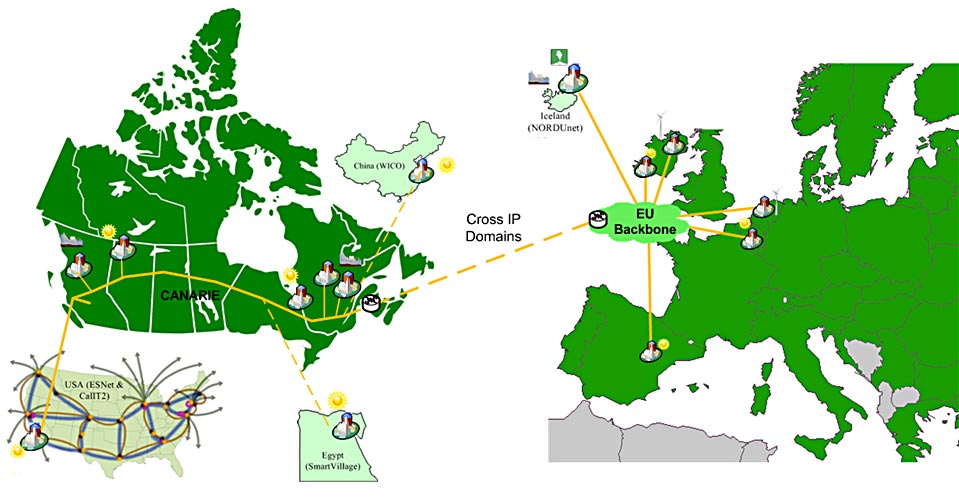
GSN Canada and GSN Europe
The testbed has supported R&D activities of hundreds of researchers, and also contributed to the establishment of the first standardized Green ICT protocol in the world. All deliverables of the project, including cloud middleware source code, publications, and methodology for building renewable powered datacenters are available for free download from the project’s website (www.greenstarnetwork.com).

